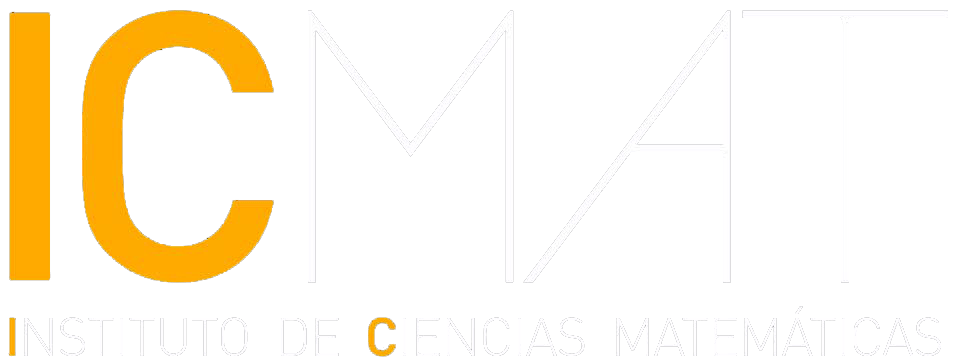Once again this year the ICMAT is taking part in the Community of Madrid Science and Technology Week, together with the CSIC (Consejo Superior de Investigaciones Científicas). Furthermore, this year its activities also form part of the international initiative Mathematics of Planet Earth 2013 (MPE), and consist of a program of the mathematics associated with our planet that is aimed at a broad cross-section of the public.
- Lecture
- “La matemática del tiempo en el planeta”, by José María Barja (University of A Coruña), November 4, 2013
-
Abstract: José María Barja will speak about the use of calendars and other measurements of time. One of the common features of every culture is the way they organize time with systems of calendars based on observable astronomical cycles. On the basis of the daily lunar and solar cycles, different social conventions have been devised for regulating daily life. Today, in our immediate surroundings, we find more calendars than the one we are used to; for example, it is now new year for more than 1,600 million people, and there are more recent models (Bangla Shôn, 1987, which shows that numbers have different representations in other cultures), or abstract calendars (like the Bali calendar) and still more perfected by almost entirely unexpected interactions (like the Chinese calendar). Even so, perhaps one of the best examples of a human cultural artifact, which is almost universally shared, is the concept of the “week”, used to regulate many aspects of social organization. Hidden popular theorems lie behind this everyday mathematics, such as the numerical sequence that determines the Jubilee Year of St James, or the more complicated algorithm for calculating Easter (which exercised Gauss and determines all our moveable feasts), not to mention old wives’ tales such as the “Happy Tenth” of the Babylonian calendar, which is believed to take place every 555 and 823 years, superstitions which, taking advantage of the innumeracy that surrounds us, currently inundate cyberspace.
-
- “La matemática del tiempo en el planeta”, by José María Barja (University of A Coruña), November 4, 2013
- Lecture
- “Interpretando mensajes de palomas… y sus palomares”, by Clara Grima (University of Sevilla), November 5, 2013
-
Abstract: The Pigeonhole Principle states something that might seem obvious: if I have more pigeons than pigeon holes, then in at least one of these holes there must be more than one pigeon. However, as obvious as it might seem, this principle can surprisingly be used to prove many mathematical results that on first sight appear difficult to demonstrate. We take a look at some of the results that can readily be obtained by using the Pigeonhole Principle.
-
- “Interpretando mensajes de palomas… y sus palomares”, by Clara Grima (University of Sevilla), November 5, 2013
– Address: C/ Pinar, 21-23. 28006 (Madrid).
- Round table
- "Matemáticas y redes sociales", November 5, 2013
-
Participants: Daniel Mediavilla, Estéban Moro, Jose Antonio Prado Bassas “Tito Eliatron”, Francisco Villtoro “Frances the Mule” and Clara Grima
-
- "Matemáticas y redes sociales", November 5, 2013
- Lecture
- “Interpretando mensajes de palomas… y sus palomares”, by Clara Grima (University of Sevilla), November 4, 2013
-
Abstract: The Pigeonhole Principle states something that might seem obvious: if I have more pigeons than pigeon holes, then in at least one of these holes there must be more than one pigeon. However, as obvious as it might seem, this principle can surprisingly be used to prove many mathematical results that on first sight appear difficult to demonstrate. We take a look at some of the results that can readily be obtained by using the Pigeonhole Principle.
-
- “Interpretando mensajes de palomas… y sus palomares”, by Clara Grima (University of Sevilla), November 4, 2013
- Lecture
- “La matemática del tiempo en el planeta”, by José María Barja (Universidad de A Coruña), November 5, 2013
-
Abstract: José María Barja will speak about the use of calendars and other measurements of time. One of the common features of every culture is the way they organize time with systems of calendars based on observable astronomical cycles. On the basis of the daily lunar and solar cycles, different social conventions have been devised for regulating daily life. Today, in our immediate surroundings, we find more calendars than the one we are used to; for example, it is now new year for more than 1,600 million people, and there are more recent models (Bangla Shôn, 1987, which shows that numbers have different representations in other cultures), or abstract calendars (like the Bali calendar) and still more perfected by almost entirely unexpected interactions (like the Chinese calendar). Even so, perhaps one of the best examples of a human cultural artifact, which is almost universally shared, is the concept of the “week”, used to regulate many aspects of social organization. Hidden popular theorems lie behind this everyday mathematics, such as the numerical sequence that determines the Jubilee Year of St James, or the more complicated algorithm for calculating Easter (which exercised Gauss and determines all our moveable feasts), not to mention old wives’ tales such as the “Happy Tenth” of the Babylonian calendahttps://www.icmat.es/research/journalsr, which is believed to take place every 555 and 823 years, superstitions which, taking advantage of the innumeracy that surrounds us, currently inundate cyberspace.
-
- “La matemática del tiempo en el planeta”, by José María Barja (Universidad de A Coruña), November 5, 2013





